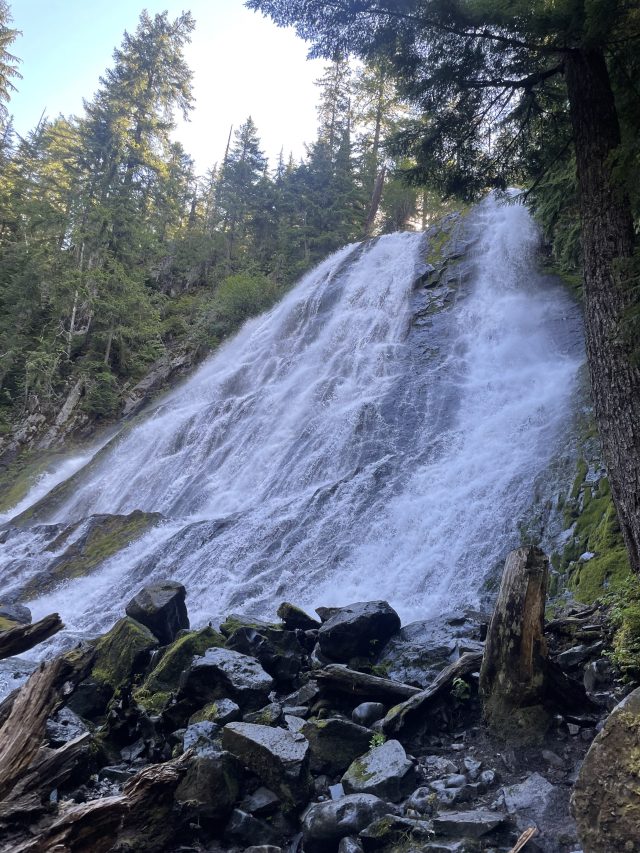Central Oregon in bloom: Where to find wildflowers
Published 3:30 am Friday, May 28, 2021

- Showy townsendia grows at the Whychus Canyon Preserve May 15, 2021.
Wildflowers across the area have been blooming since late April, and with recent welcome rain
along with melting snow, more will start budding out soon. Here are a few trails to check out for vibrant blooms and verdant landscapes. Bonus: You’ll get in some trail hikes in the process.
Trending
Because this winter was fairly dry in some regions, some growth may be limited.
High Desert blooms
There’s still time to catch the lower elevation and High Desert trails with fireworks of color. As opposed to their higher elevation counterparts, sometimes spotting a wildflower in the High Desert might feel more like a game of
eye
spy, but it’s worth it when you do. That’s not to say you won’t find something more distinct like a desert lupine or large swaths of paintbrush adding their beautiful red pigment to the dry desert-y landscape. Be sure to look all around you and even in the bushes and trees as they may also be blooming.
Whychus Canyon Preserve — The preserve has varied terrains that allow for a wide variety of flora to grow each year. From the banks of the Whychus Creek to the dryer flats on the canyon rim, you can spot lupin, milkvetch, larkspur, shaggy daisies and more. You may even catch the tail end of the sand lilies along the rim trails. The Deschutes Land Trust, who manages the 930-acre preserve also offers guided wildflower hikes during the season, but spots fill up quickly so early registration is a must. See deschuteslandtrust.org to sign up.
Trending
Rimrock Springs and Gray Butte — They may not look like much more than sage and dirt, but look a little closer, and you can find ground covers of tiny purple-flowered phlox, lupine, larkspur and paintbrush — even a stray bitterroot may be creeping out of the sagebrush steppe terrain. Rimrock Springs’ easy loop is a good alternative to the more strenuous butte climb, but bring plenty of water for either trek.
Scout Camp Trail — The moderate 2.5-mile trail loops down deep into the Deschutes River canyon, offering not only stunning views of the plateaus and rocky geologic formations, but also in the spring, the trail erupts with color from balsamroot, bitterroot, showy townsendia, yarrow, paintbrush, basalt milkvetch and more.
Painted Hills/Sheep Rock — If you’re up for a longer drive, you may still be able to catch some of the stunning displays of wildflowers against the equally stunning paleosols of the national monument near Mitchell. Prairie stars welcome the season and slowly give way to bitterroot, mariposa lilies blazing stars and even prickly pears come July.
Smith Rock — If you get up early enough or luck out and can find a parking spot, the park is full of vibrant colors this time of year along the river trails. Arrowleaf balsamroot welcomes hikers near the parking area and down the Chute and Canyon trails then along the Crooked River where you may find Idaho milkvetch, chokeberry, white campion and yarrow.
Mountain wildflower trails
Early flowers are starting to peak out along the lower elevations in the Ochocos and the Cascades. While many trails may still be under considerable amounts of snow for a while, plan ahead as they may require the newly implemented Central Cascades Wilderness Permit to access this summer.
Broken Top Trail/Green Lakes/Todd Lake — Access to these trails and areas will have to wait later next month or July but when it does open up, the alpine trails will erupt with colorful wildflowers including leafy asters, bog orchids, larkspur, paintbrushes, monkey flowers, arnica, St. John’s wort, yellow violets and more. All three trails require Central Cascades Wilderness Permits for the day ($1) and overnight ($6) use. Get your permits online up to seven days in advance on recreation.gov.
Big Summit Prairie/North Fork Crooked River — The vast prairie between Prineville and Paulina is mostly privately owned, there are a few areas of public access (grab a forest service map if you are unfamiliar with the area) and just driving past and checking out what’s growing just off the side of the road can yield great results as well — when you can pull over that is. Terrain painted red with paintbrush and besseya joins the yellow balsamroot, desert shooting star, grass widow, cama, sticky geranium, desert parsley and mule’s ears. Soon these will give way to various wild onions, goldenweed, lupine, hawksbeard and penstemon.
Lookout Mountain/Round Mountain/Ochocos — If you can’t wait to see some mountain wildflower displays, the Ochoco Mountains are already steadily melting and trails will be accessible sooner than those in the Cascades. Lookout and Round Mountain trails just east of Prineville offer great hikes and bike rides through the spring blooms and feature balsamroot, arnica, Brown’s peony, yellow desert daisies, smooth-leaved gilia, fairybells and dagger pods.
Canyon Creek Meadows — The hike is impressively beautiful any time of year as Three Finger Jack rises above the green meadow and subalpine forest below. But in late July, wildflowers peak with columbine, mariposa lily, flax, dogwood, Oregon sunshine, camas, paintbrush, peonies, buttercups, lupine and you may even catch a glimpse of trillium.
Farther Out
Castle Crest Wildflower Trail, Crater Lake — The entirety of Crater Lake National Park is full of great wildflower areas, but once the lake’s Rim Drive opens, the plants along the short and easy Castle Crest loop trail should be giving off their seasonal best. If you ever envision walking along a trail where flora creeps gently along a stony path with a babbling creek like a Thomas Kinkade painting, this is that walk. From paintbrush and skyrockets to bleeding hearts, elephant’s head pedicularis, red columbine, Washington lily, phantom orchid, monkshood and Jacob’s ladder the variety seen here is hardly rivaled anywhere else.








